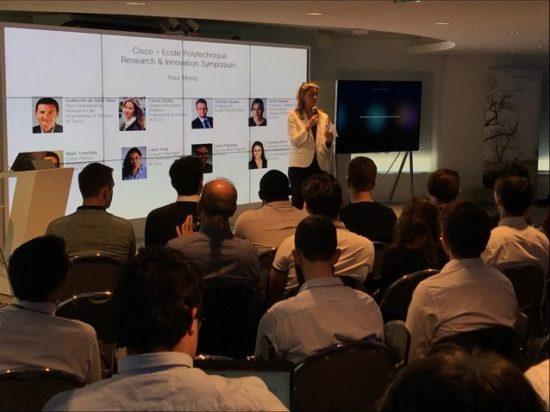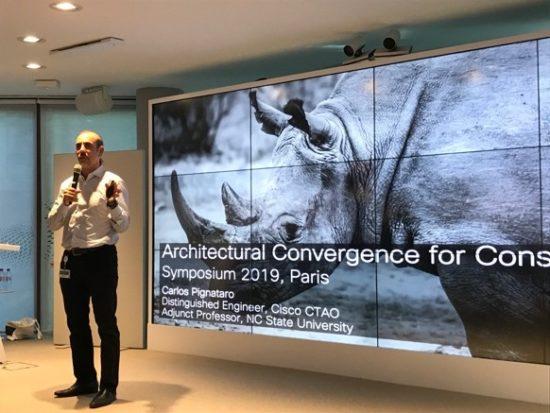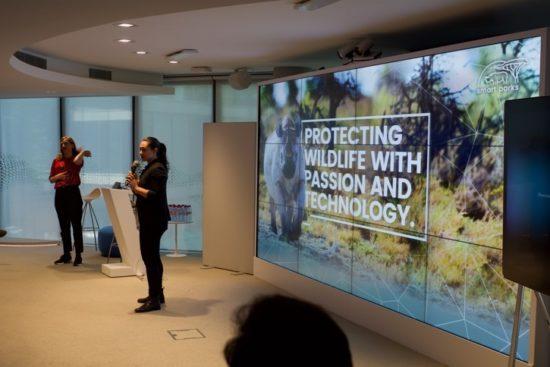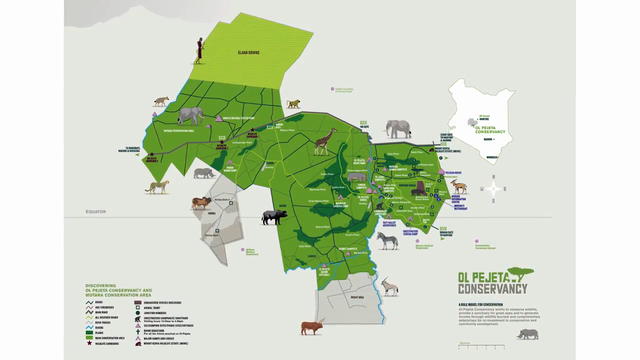Techno-Conservation Part One: A Symposium Bringing Together Conservationists, Technologists, and Academics
By Carlos Pignataro, CTO, Distinguished Engineer
This blog was co-written with Dave Ward, SVP, CTO of Engineering and Chief Architect at Cisco
“If you want to go fast, go alone; but if you want to go far, go together.”
- Proverb, believed to be of African origins.
Two decades ago, I saw the immense potential in computer networking and the Internet’s world-changing impact of connecting people through technology. With the ability to bring together two of my great passions, technology and people, I dived right in. Since then, I have seen many industries emerge, coalesce, and grow. I’ve seen markets created, and technology transitions realize. In fact, I have led some of them – defining specifications for virtualized Internet topologies with pseudowires, encapsulations, and VPN service models, co-inventing Operations, Administration, and Maintenance (OAM) and service assurance protocols such as S-BFD, and crafting a service function chaining architecture. And now, with new technologies being developed and use-cases surfacing, I foresee an immense and ever-growing opportunity for technology to drive impact and meaningful positive change for people, society, and our planet.
Both Dave and I believe that “Techno-Conservation” is one such emerging industry. In all of my years in tech, doing interoperable protocols and architectures, I’ve never seen such a multi-landscaped problem. It is a space with many facets, and there is an intrinsic ability to layer technologies to create a rich solution.
As Engineering CTO and Chief Architect Dave Ward explains: at Cisco “we believe that technology has a role in Conservation efforts and want to work directly with Conservationists to build pragmatic solutions to preserve the planet’s endangered ecosystems and species. If the technology that conservations need doesn’t exist, we want to Co-Innovate to invent it.”
A Symposium for the Techno-Conservation Industry
Chuck Robbins, Cisco’s Chairman and CEO, recently said: “What is good for the world, and what is good for business, is more closely connected than ever before.” This year, at Cisco Ecole Polytechnique Fourth Annual Innovation and Research Symposium, we took that message to heart. This past May in Paris, France, Cisco and Ecole Polytechnique hosted 22 speakers and 89 academics, technologists, and conservation industry experts to share and learn how digital technologies are used and could be further applied to benefit wildlife conservation.
Ward explains that he is “convinced that an individual who is an industry leader of the future is one that understands there are multiple communities that need to be influenced, and that we have interdependencies between these pieces”. While at first these two topics may not seem directly related, the Techno-Conservation space is growing rapidly and requires intersectional solutions to solve such increasingly complex problems.
Unfortunately, for many, it is not advancing fast enough. Iconic species such as the rhino, elephant, tiger, and lion are facing a devastating decline in populations. In the next 30 years, some subspecies are projected to go extinct in the wild. That means that my grandchildren may never have lived in a world where rhinos and lions exist and roam free. While this reality can be paralyzing, it is the very gravity of situations like these that brings together those that are determined and dedicated to change. We can only do this by being a cohesive collective, it does take a village.
Meeting of the Minds
During the symposium, over two days, conservationists, engineers, professors, and architects shared a diverse range of ideas, experience, and solutions for conservation efforts. From drones and IoT to community engagement and education, this group of committed individuals worked to combine efforts towards global techno-conservation. Representatives from animal reserves in Kenya and Namibia brought Silicon Valley engineers into their world, and Distinguished Engineers explained the potential of applying some of the newest technologies being researched and developed to protecting endangered species.
The desired outcomes of this workshop extend beyond conservation. For example, many of the solutions described have veterinarian and research applications. One common take-away throughout the day was around the management and fusion of data: with data engines and associated sharing policies being at the heart of advancing science and protecting species. Appropriately capturing and sharing data will enable different fields, including scientists, conservationists, and technologies, to learn and evolve.
As the symposium continued, an energy of collaboration and feeling of togetherness filled the room. Coming together as a multi-disciplinary industry gave us a glimpse of how we can bridge to possible.
Ward, sponsor and mastermind behind the Symposium, recognized this event as a milestone in the technology industry for companies taking a strong, bold, stance to protect our planet and bring about positive change through technology.
Two Days, Twenty-Two Presenters
After Cisco Fellow Mark Townsley’s opening, twenty-two presenters shared their knowledge, experience, and perspective. I found out many unsuspected uses of technology and learned about use-cases seeking solutions. The comprehensiveness of the presentations and the depth of dialogue is evidenced by some key technologies covered, including:
- Drones and Algorithms in Wildlife Management
- Learning-Driven Wireless Networking
- Low Power Wide Area Networks (LPWAN) and Static Context Header Compression (SCHC)
- Ultra-Reliable Networks
- Field Sensors for IoT
- Cyber-Physical Autonomous Systems
- Open Source Environmental Sensing
- Sound Localization
- Designing, Monitoring & Data Interpretation of Sensors
- Defense Against the Dark Artifacts
- User Centric Data Analytics on the Edge
- Swarm Computing
- Artificial Intelligence for Wildlife Protection
The symposium concluded with a set of “Lightning Talks” and a panel rich with dialogue. I had the privilege to participate in this panel along with three other industry experts. I learned from fellow panelists and felt a contributing part of the ecosystem.
One corollary is that the problem space is multi-dimensional: multi-ecosystem, multi-technology, multi-species, multi-geography, multi-community, and multi-partner. And this is where a flexible Reference Architecture is foundational.
The Outcome
Established companies and startups alike came together in Paris. Even as the days ended, the networking and informal conversations proved to be just as valuable as the presentations. Even new working prototypes of Opencollar.io were revealed! Several Tweets depict the richness of these two days. One speaker, CEO of an organization working to bring standardized operations control centers to reserves and enable rangers through radio technologies, shared his enthusiasm: “This is the first time in 6 years I’ve ever seen light at the end of the tunnel for technology in this area of conservation. Team work, collaboration and understanding how we can do this together and deliver something that allows conservationist to get on with their jobs and not try and become experts in what we do.”
To learn more, I would absolutely encourage you to view the video summary of the Cisco Polytechnique Symposium 2019
Announcement: We are pleased to announce that Cisco and NTT Ltd. have been named in Fortune’s fifth annual Change World List, recognizing both companies as leaders among the Fortune Global 500 that are addressing the world’s biggest challenges. In their list, Fortune highlighted the Connected Conservation solution, the result of a Cisco and Dimension Data partnership that leverages technology to protect endangered wildlife species from poaching. This project has seen incredible success rates of up to 98% in animal protection and continues to expand across Africa, emphasizing Cisco’s culture of giving back to society through technological advancement





